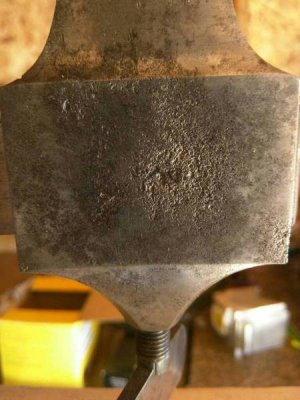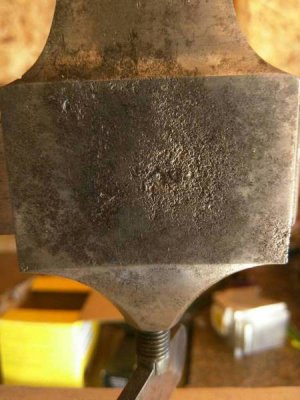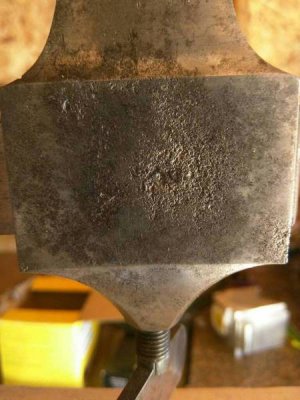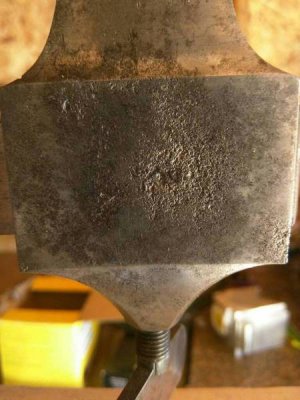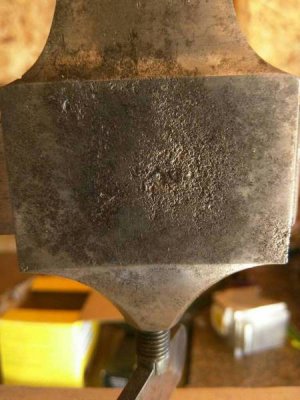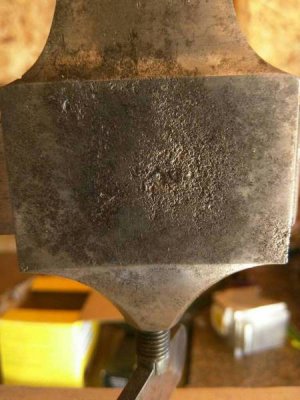Hi Jake,
I spent over an hour just browsing thru all the links to "watchmakers" lathes. Lot's of fun.
You are correct I was talking about the steel plates, not the 2x4 (although I bet that's newer too....

)
Nothing certain, it just looks to me that it's an "aftermarket addition"
- it doesn't look as old as the headstock and tailstock,
- it is made differently; it looks bolted together rather than cast and machined like the headstock/tailstock,
- it has different handles, and
- it doesn't resemble any other lathe bases on lathes.co.uk.
Ha! I see it now that you've pointed it out. It's quite obvious actually... like my noobness.
I cannot see enough detail in your original photo. Is it possible there is a manufacturers mark here:
View attachment 126789
-brino


 )
)